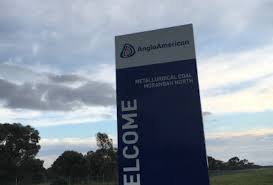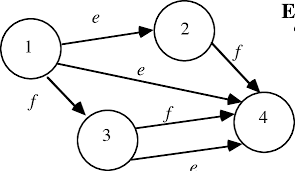
Anglo Moranbah North Coal Spontaneous Combustion LW 605 Feb 2021. RSHQ Inspectors Mine Record Entries February 21st 2021
Inspector Brown issued a Section 167 Directive suspending re-entry to the Moranbah North Mine due to exceeding the Level 3 Active Goaf Spontaneous Combustion TARPs on the night of the 20th of February 2021 which resulted in all workers being compulsorily withdrawn from the Mine
A Section 167 Directive is given for a suspension of re-entry into the mine until such time as the SSE can demonstrate an acceptable level of risk.
The Section 167 Directive stays in place preventing anyone re-entering MNC because the SSE could not demonstrate an acceptable level of risk for over 2 months until re-entry Inspections occur on the 7th May 2021.
This is nearly one month after the Grosvenor BOI finished its public hearing.
Yet not one word of this event ever makes any sort of airing at the Grosvenor BOI by any of the Inspectors or SIMTARS Officers and others who attended Moranbah North and later gave evidence at the Grosvenor BOI.
Inspector Brown sets out the bare circumstances of the Workers being withdrawn from the Moranbah North Coal (MNC) Mine
It also states that MNC reported an “OVER-PRESSURE” event in the LW605 Goaf around the same time elevated levels of CO and Ethylene that hit the Level 3 of the TARP for all Workers to be evacuated from the Mine.
Inspector Brown discusses the gas data and trends from the Goaf Wells.
It is no coincidence that MNC Management use the words “OVER-PRESSURE” for this event.
In only a few weeks after this event Anglo and various witnesses at the Grosvenor will use the term “OVER-PRESSURE” Event at Grosvenor to advance their theory that the fist overpressure event at Grosvenor was a massive roof fall in the goaf that caused a small piece of PUR to in 15 seconds reach over the temperature of 450 C and ignite methane.
Then this piece of burning PUR just magically goes out, cools down below 100 C just as instantly, then disappears from sight never to rear its head again for the next month until LW 104 was emergency sealed to a runaway uncontrolled spontaneous combustion event less than a month later.
Not even the Grosvenor Inquiry believed the theory put forward by various so called experts.
56. The Board considers the wind blast hypothesis as unlikely for several reasons:
a. Given the estimated height of the spanning unit, at least 32 metres above the roof line, applying even a low bulking factor makes it unlikely that a sufficient air gap existed to account for the force of the pressure wave;
b. The lack of precedent for such an event in the long history of mining the GM seam militates against this cause; and
c. Given the indiscriminate expulsion of goaf gases onto the longwall face consequent upon a wind blast from strata failure, the Board considers it unlikely that only two gas sensors, at the tailgate drive and the #149 shield sensor, would detect an increased level of methane, and particularly that no increased level of methane would be experienced at either the inbye or outbye sensors in the tailgate return.
57. Having found that a strata fall in the goaf is an unlikely explanation of the first pressure wave, the Board reviewed the evidence indicating a methane explosion in the goaf, ultimately concluding that it is the likely explanation.
74. Gas data from those two goaf wells, taken immediately after the explosion, show clear signs of the combustion of methane.
75. When measured against the mine’s TARPs, none of the indicators was present at levels that suggested a widespread spontaneous combustion event was occurring. Rather, they are consistent with a small but intense heating.
76. The Board concludes that on the afternoon of 6 May 2020, there was an explosible mixture of methane and air within 55 metres of the shields, on the tailgate side of the goaf, which is also where it is likely that spontaneous combustion activity was occurring.
77. In the circumstances, the Board concludes that a spontaneous combustion-initiated methane explosion was the probable cause of the first pressure wave.
The considered view of the Grosvenor Mine BOI was that there is absolutely no history of massive roof falls and resulting windblast overpressure events in the total history of mining in the Goonyella Middle Seam dating back to the 1990’s.
This is also backed up by the information ANGLO provided to Professor Moreby for the Life of Mine Ventilation Study in 2010.
It is understood that none of the stratigraphic section contains members sufficiently strong or massive to pose a risk of classic or large windblast events. This issue should be considered during the geological evaluation, if only to demonstrate the risk is not present.
MRE 21st April 2021
Inspector Brown and other Inspectors held a meeting with the Moranbah North SSE, Underground Mine Manager, Ventilation Superintendent and Technical Services Manager.
They discuss the proposed Spontaneous Combustion TARP’s proposed for the SSE to demonstrate an acceptable level of Risk for a re-entry.
There was a great deal of aired debate and cross examination at the Grosvenor Inquiry about how it is not acceptable to use the word “AND” in linking multiple triggers before a TARP is enacted.
• IOM Brown explained the draft TARP0009 was not considered to be conservative enough for re-entry. Examples provided were;
Surface LW605 Goaf Monitoring System including Simtars Lab and Goaf Drainage The use of “And” (linking triggers) as well as “But” statements (creating conflict) are not acceptable.
It is just beyond belief that MNC Senior Management (SSE, UMM, VO) while this has already been mentioned not only decides that there is absolutely nothing wrong is using the word “AND”, it is just fine and dandy and completely above board now putting the word “BUT” into its new Spontaneous Combustion TARP Triggers.
What are these ANGLO people thinking?
What fantasy Coal Mine are they working at?
I would like to point out that there is mention of a technical report that is referenced for establishing TARP13 and is also used for guidance in TARP0009, the document is “Final Report, Spontaneous Combustion TARP Trigger Review” issued to Moranbah Nth Mine 5 February 2020,
IOM Brown is seeking further advice within the Inspectorate and RSHQ on the technical data contained within the report
- Firstly, were the authors of the Technical Report also the same people who gave technical Advice to Anglo Grosvenor on spontaneous combustion TARPS.
- Why after the spontaneous combustion methane explosions at Grosvenor in May and June the previous year (May and June 2020) was Moranbah North using a technical report that was done months before the Grosvenor Explosions.
- What did the RSHQ Inspectors ever decide about the technical data the authors of the technical report provided?
- Was it correct? If not what have they done to correct this?
- Are the authors still giving Technical Advice for Spon Com TARPS?
The meeting also discussed the use of Grahams Ration being removed as a TARP by MNC even though it is mandatory requirement under the Regulations to do so.
Graham’s Ratio (and CO/CO2 ratio) have been removed from draft TARP0009, understanding from the previous meeting with Inspectors was that removal of these ratios was the preference of Inspectors. IOM Brown explained the Ratios are required by Legislation (Regulations 222 and 223 were referenced)
When challenged by RSHQ Inspector Brown about why the confirmed presence of Ethylene is not a mandatory stand alone withdrawal TARP in the MNC procedures, Management have come up with the old chestnut that Ethylene is always present in the goaf and in fact is a naturally occuring low level seam gas.
There were discussions surrounding the presence of ethylene being normalised,TARP0009 has very similar ethylene triggers as TARP13 although the combined CO has been reduced.
Ethylene is considered in the mining industry as a reliable trigger for spontaneous combustion however, combined with other triggers weakens its usefulness.
MrXXXX explained there is history at the mine of ethylene presenting without elevated CO, further stated this is supported by more recent history of continued presence of ethylene in the mines gas data.
When I was first told this piece of incorrect rubbish back in around 1999 at North Goonyella I gave a challenge that no one has ever taken up.
“Go take 100 samples out of all your gas pre-drainage holes. Analyze them and show me just one that has ethylene in it”
Of course no one at North Goonyella or the few others that tried to tell me this fairytale ever came back to me at any stage to show they were right and I was wrong. All they did was go “Yes Uhm. Ok. Well get back to you” all the while with a sour disappointed face that I was not so gullible as to fall for this.
In conclusion Inspector Brown made the following statements
• IOM Brown explained the draft TARP0009 was not considered to be conservative enough for re-entry. Examples provided were;
Surface LW605 Goaf Monitoring System including Simtars Lab and Goaf Drainage The use of “And” (linking triggers) as well as “But” statements (creating conflict) are not acceptable.
The reduction of metrics for triggers erodes the factor of safety, advice was given to the SSE on this matter. IOM Brown again questioned the logic of not considering air-free CO as a trigger, if it remains the position of the site to exclude this as a trigger, a response explaining why it should be excluded
